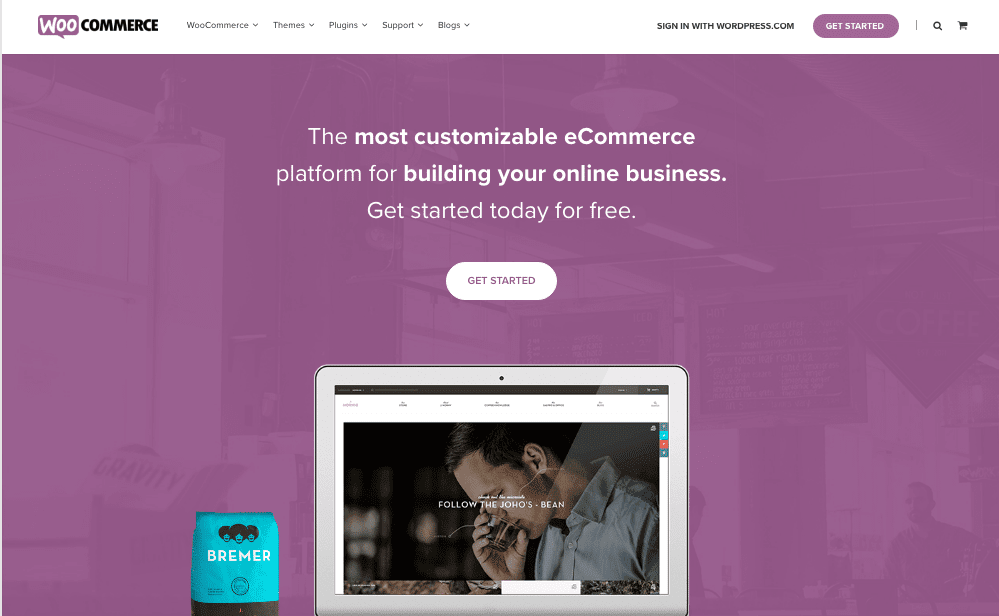This blog post is part of “The Ultimate Guide to Web Development” blog series.
If your business sells products online, you will need an ecommerce platform of some kind. You could do anything from creating a landing page with a link to PayPal, to having a full-blown online marketplace. Most businesses fall somewhere in between, and most end up picking one of the two most popular ecommerce platforms: WooCommerce or Shopify. Both have strengths and weaknesses, and which is right for you will depend on your resources and sales plans.
Read on to learn more or check out the video version.
WooCommerce
WooCommerce is a WordPress plugin developed by WooThemes. This means that the design of your e-commerce pages will be based on the WordPress theme you have selected. It works especially well with WooThemes but will work with any WordPress theme. WooThemes have pre-built templates for product listings and other standard store features, which can speed up development. The WooCommerce Storefront is a free basic e-commerce page, and there are “child” plugins available for purchase to add functionality.

Design-wise, WooCommerce is a lot like WordPress–it can be programmed and designed to do just about anything you want it to do. But someone needs to do that work. As the functionality you want to add becomes more sophisticated you will likely need more programming resources.
While WooCommerce is technically free, to get it to function like a true online store will require additional paid features such as encrypted SSL connections, a payment gateway, and hosting.
With WooCommerce, you have total control over your online store. You host it. You manage it. You maintain it. This can be a blessing or a curse, depending on how involved you like to be in your website management. You can modify your store in any way you like, and owning your own site makes it more portable should your needs change. As an open source platform, WooCommerce relies on a user community for support, so getting help can be more challenging and time-consuming than dialing a support line might be.
Shopify
The biggest difference between Shopify and WooCommerce is that Shopify is a hosted platform–meaning you purchase access to Shopify’s ecommerce platform and Shopify controls the hosting, available features, and data. Shopify starts at $29/mo, which includes hosting, the payment gateway, and SSL encryption. It has hundreds of store templates, supports unlimited products, and includes a free subdomain with your subscription. Shopify also offers email, chat, and phone support.

The primary advantage Shopify has over WooCommerce is ease-of-use. All you have to do to get started is go to Shopify.com and start following prompts. Because you’re tapping into an existing e-commerce infrastructure, most of what you need is already there.
That said, using Shopify is kind of like building a website using Weebly or Wix. Yes, it’s easy to get started, but in the end, you are limited to the features offered there. Open source platforms like WordPress and WooCommerce, on the other hand, can be customized programmed to do just about anything you can imagine. Also, once you have built a Shopify site, it will be more difficult to move to another platform because you don’t own or control the site.
Most analyses of the price differences between WooCommerce and Shopify end up being about the same. WooCommerce costs come from non-WooCommerce products in many cases (SSL certs, payment gateway), so it looks like a better deal with a low or non-existent sticker price.
If you want to have full control over your ecommerce pages, and have the resources to do some of the design and programming, and want a store you can own and customize to your heart’s content, WooCommerce might be a better choice. If you want to get up and running immediately and don’t expect to ever outgrow Shopify’s functionality, it can be a good choice as well. Both platforms offer a pretty complete set of features–in addition to those already listed are tax and shipping calculators, pricing and discounting controls, SEO tools, and analytics.
This blog post is part of “The Ultimate Guide to Web Development” blog series.




